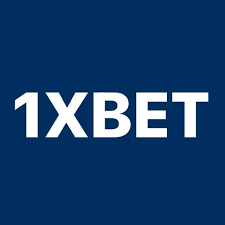The Future of Play-to-Earn Gambling in Web3 45

The Future of Play-to-Earn Gambling in Web3
The world of online gambling has undergone significant transformations over the years, with technological advancements paving the way for novel gaming experiences. As we stand on the brink of a new era defined by Web3 technology, the concept of Play-to-Earn (P2E) gambling is emerging as a revolutionary approach. Players can engage in their favorite games while simultaneously earning financial rewards. This article explores the potential future of Play-to-Earn gambling in Web3, its implications for the gaming industry, and the various elements shaping this evolving landscape. In the spirit of this evolution, consider trying the The Future of Play-to-Earn Gambling in Web3 best RTP slots to maximize your enjoyment and earnings.
The Concept of Play-to-Earn
Play-to-Earn gaming allows players to earn real-world value through gameplay. Unlike traditional gaming models where users pay upfront or subscribe for access, P2E platforms incentivize users to participate actively. This is often achieved through cryptocurrencies or non-fungible tokens (NFTs) that hold real monetary value. Players can monetize their skills, time, and effort, creating a more engaging and profitable gaming experience.
The Role of Web3 in Transforming Gambling
Web3 represents the next phase of the internet, characterized by decentralization, blockchain technology, and user empowerment. In the gambling sector, Web3 offers several advantages including transparency, security, and player ownership. Smart contracts facilitate trustless gambling experiences, eliminating the need for intermediaries and reducing operational costs. This could potentially lead to higher payouts for players, enhancing their overall experience.

Integration of Cryptocurrencies in Gambling
Cryptocurrencies have already begun to revolutionize the gambling landscape. Users can transact in digital currencies, making deposits and withdrawals faster and more efficient. Additionally, cryptocurrencies provide an added layer of privacy for players, something traditional online casinos struggle to offer. With the rise of stablecoins, the volatility often associated with crypto gambling may become less of an issue, as players can maintain a more consistent value in their transactions.
NFTs in the Gambling Ecosystem
NFTs are another critical component of the Play-to-Earn model within Web3 gambling. Unique digital assets can be represented as NFTs, allowing players to own a part of the gaming experience. For example, players can earn or buy unique in-game items that enhance their gaming experience or have intrinsic value outside the game. This ownership transforms players from mere consumers into stakeholders, providing additional incentives to engage and invest in the gaming ecosystem.
Game Mechanics and User Engagement
Engaging game mechanics are vital for the success of Play-to-Earn gambling. Game developers are incentivized to create experiences that keep players returning. This includes developing compelling storylines, offering new challenges, and providing opportunities for player collaboration and competition. Gamification elements, such as leaderboards, achievements, and community events, will be integral in fostering a loyal and engaged user base.
Legal and Regulatory Implications
As Play-to-Earn gambling platforms grow, they will inevitably face legal and regulatory challenges. Governments and regulatory bodies are still grappling with how to approach cryptocurrencies and blockchain technology in gambling. The decentralized nature of these platforms makes it difficult to enforce traditional gambling laws. It will be crucial for industry stakeholders to work collaboratively with regulators to create frameworks that protect players while fostering innovation.

Potential Challenges and Risks
Although the future looks promising for Play-to-Earn gambling, several challenges remain. The volatile nature of cryptocurrencies can deter some players, while security concerns, such as hacking and fraud, persist in the digital landscape. Furthermore, the gaming industry’s reputation may be at risk if P2E models are associated with scams or unethical practices. Building a trustworthy and secure environment will be essential for the long-term viability of Play-to-Earn gambling.
User Experience and Community Building
A strong community can significantly enhance the success of Play-to-Earn platforms. Developers must prioritize user experience, not just in gameplay mechanics but also in community interaction. Social features, forums, and player events can foster a sense of belonging. Engaging with the community can lead to player-driven decisions and further innovation, creating a robust ecosystem.
Looking Ahead: The Future of Play-to-Earn Gambling
As we move forward, the landscape of Play-to-Earn gambling in Web3 will likely mature and evolve. The integration of virtual reality (VR) and augmented reality (AR) into P2E gaming could create even more immersive experiences, further blurring the lines between gaming, social interaction, and traditional gambling. Potential future developments in tokenomics and gameplay mechanics will be essential in determining the trajectory of this innovative sector.
Conclusion
The Future of Play-to-Earn Gambling in Web3 promises to redefine how players interact with online gaming platforms. By leveraging blockchain technology, cryptocurrencies, and NFTs, a new paradigm is emerging that prioritizes player engagement, ownership, and real-world value. While challenges remain, the potential for growth and innovation in this space is immense. As the industry continues to evolve, embracing the principles of decentralization and community will be key to unlocking the full potential of Play-to-Earn gambling.
